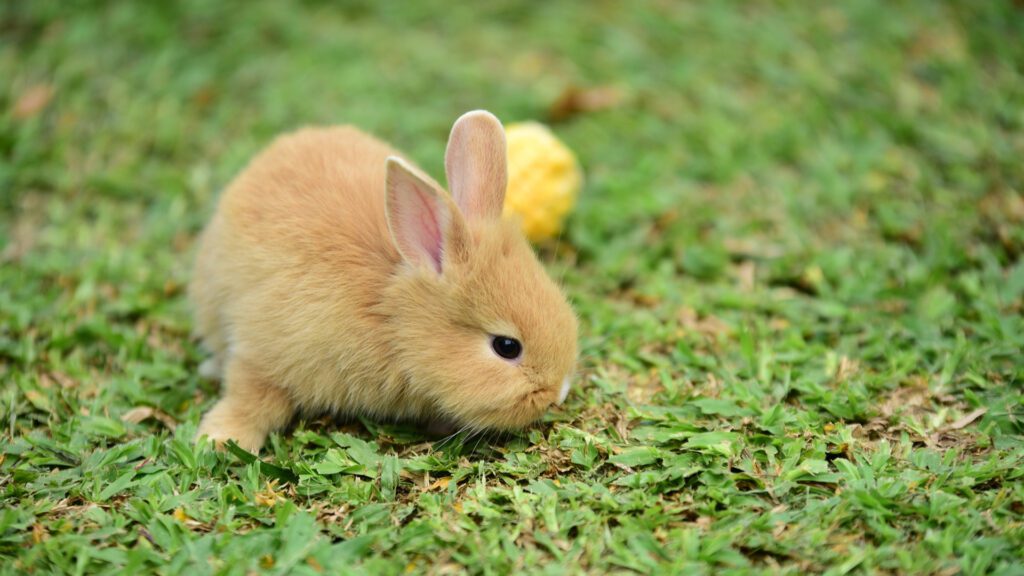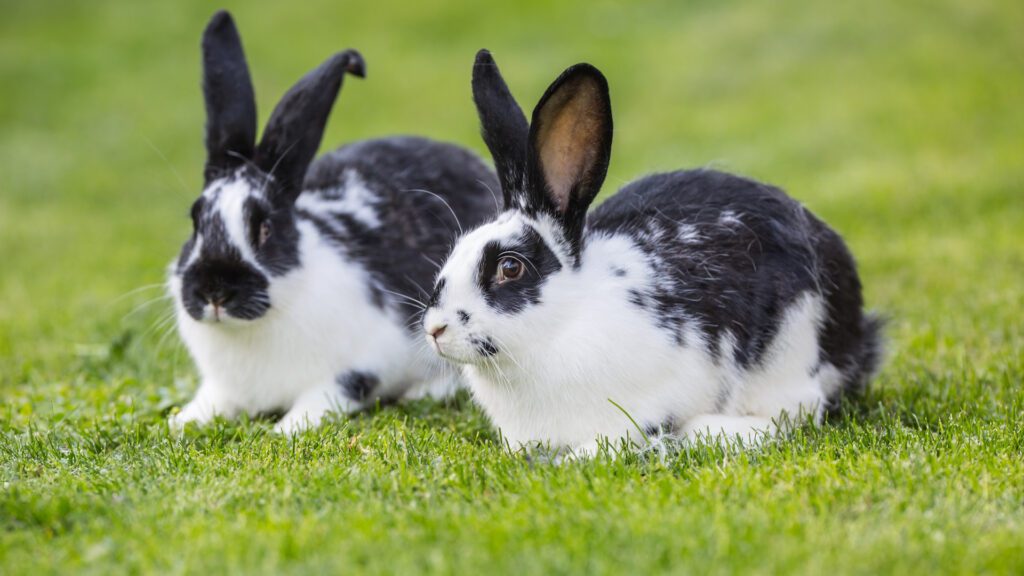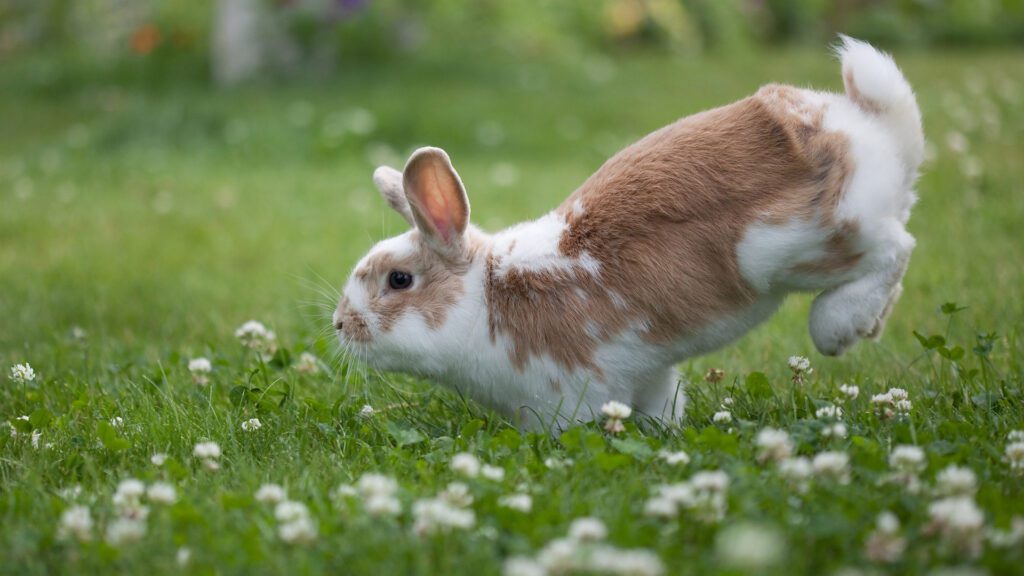Are you considering getting a house rabbit but unsure how to figure out its age? A rabbits’ life expectancy may vary depending on the breed.
Scroll through and learn how old an adult rabbit is and the 5 stages of their life
Life Stages of Rabbits
Rabbits grow up faster than humans do. They go from babies to teenagers to adults in just one year! Let’s see what happens in each stage:
Baby Rabbits: 0-2 Months

Baby rabbits are born deaf, blind, and without fur. This makes them dependent on the mother rabbit for milk. The average litter size for a rabbit is 4-6 kits and can reach up to 14 in a healthy pregnancy.
After 10 days of birth, the baby bunnies develop fur and open their eyes after 12-14 days. Baby rabbits are sensitive and shouldn’t be weaned until 8 weeks old.
Behavior Patterns
Once the rabbit opens its eyes, it gets active and reacts to everything it hears. The rabbit becomes healthier and starts to gain weight, which can be a sign of a developed immune system.
Diet
It is safe to introduce hay and pellets into a rabbit’s diet once it is 3-4 weeks old, with access to mother’s milk and cecal droppings.
Teenage Rabbits: 2-6 Months
Rabbits tend to become more expressive as they grow older. It is best to separate the baby from the mother at 8 weeks of age and females from males since rabbits reach sexual maturity at ten weeks old.
Most male rabbits reach sexual maturity around 4 months old, and their testicles will drop, while female rabbits typically reach sexual maturity when 8 months old, developing a dewlap.
Behavior Patterns
At this point, both male and female rabbits start acting aggressively. They become more territorial and urinate to mark their territory. Male rabbits attack other rabbits, while females fake their pregnancy by making a nest.
Getting your rabbit spayed or neutered can control these behavioral changes for some time.
Diet
This transitional phase of quitting milk and adjusting to solid food can be tough. Rabbits need alfalfa pellets and hay to chew on to consume more calcium and protein for their growth.
At 3 months old, they can be introduced to greens, gradually building up taste. Make sure that your rabbit always has access to fresh water.
Young Rabbits: 6 -18 Months

Most rabbits will still gain weight until they are fully developed at 18 months. At this stage, a visible soft coat will change into an adult coat. The rabbits may be more curious and sniff at everything than they would earlier.
Behavior Patterns
If the rabbit is spayed or neutered, it will be lively, running around and chewing more than usual. They will show more of their personalities by not letting you pet for long periods of time.
Diet
Young rabbits need more pellets to achieve their full weight. Introduce more leafy vegetables, grass hay, pellets, and timothy. Slowly exclude alfalfa hay from the diet.
Adult Rabbits: 18 Months – 7 years
Many rabbits become calm and composed but can still be very active in old age. They blend in with the family and will cuddle more.
Behavior Patterns
Your rabbit will become more cuddly and spend more time with you than before. At this age, they also chew and dig more.
Diet
Adult rabbit diets include grass hay, leafy greens, and reduced pellets.
Elderly Rabbits: 7 years & Above
Each rabbit slows down at a different age. Rabbits usually get visibly old at 6-8 years.
Behavior Patterns
At this age, rabbits tend to become less active and more sleepy. The rabbit will start losing rapid weight or become obese.
Diet
Rabbit food depends on their needs as they age. You can contact your vet to plan a diet targeting particular health concerns.
How Old Is An Adult Rabbit?
Rabbits make terrific pets, not just because they’re fun and lively but also because they may live longer than most pets. Rabbits typically become adults at the age of 18 months to 5 years, depending on the breed.
On average, a healthy rabbit can live 8 to 12 years. Smaller breeds of rabbits, like the Mini Rex or the Dutch rabbit, often surpass the average, living well into their teens.
Larger rabbit breeds, such as the Flemish Giant, usually have a shorter life expectancy, often around 5 to 6 years.
How You Can Tell The Age of a Rabbit

Determining the age of a rabbit can be tricky, but here are five major signs to look for.
Teeth: Young rabbits have small, smooth teeth. The teeth grow longer as they age and can become worn down or chipped.
Fur: Kittens have soft, fine fur. Adult rabbits develop coarser fur. Older rabbits have graying or patchy fur.
Eyes: Young rabbits have bright, clear eyes. As they age, their eyes can become cloudy or dull.
Behavior: Young rabbits are typically more active and playful. Senior rabbits may move slower or seem less energetic.
Size and Weight: A rabbit’s size can indicate age. Kittens grow rapidly, while adult rabbits have a more stable size. Overweight older rabbits also show signs of age.
Care Needed For Bunnies During Different Life Stages
Rabbit care is necessary at all stages, whether infant or adult, but how can you do so? Check out in this section!
Newborns
Newborn bunnies are entirely dependent on their mother. They require warmth and a safe nesting area. If separated from their mother, consult a vet for feeding guidance.
Young Bunnies
At this stage, the rabbit is still developing and exploring solid food. Provide high-quality hay and fresh water. Ensure they have a safe space to hop and play. Avoid handling them too much, as they still rely on their mother.
Adolescents
Spaying or neutering your pet rabbit is recommended to prevent territorial issues. For a happy and healthy rabbit, continue a balanced diet and regular vet check-ups.
Adults
Adult bunnies need a stable environment and a consistent diet. Ensure unlimited access to hay, occasional fresh veggies, and limited pellets. Regular exercise is crucial to maintain their health.
Seniors
Seniors may require special attention. They might need softer food and more frequent vet visits. Monitor any signs of arthritis or dental issues.
Key Takeaways
Even though rabbits’ average life expectancy is 10 years, they can still live longer with proper care. To maximize their lifespan, feed quality food, visit the vet when necessary, and maintain an overall peaceful environment.


